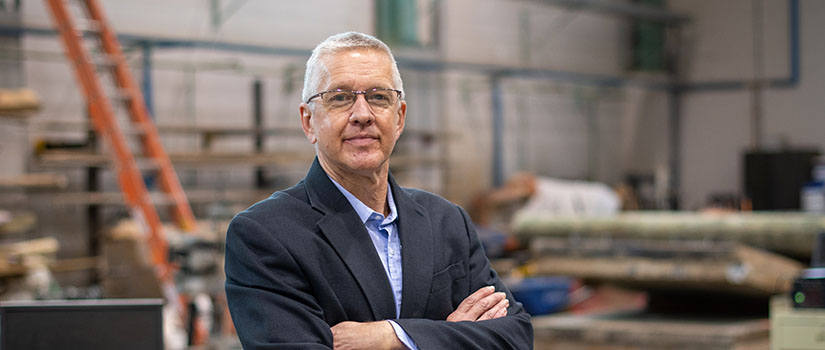Professor Paul Ziehl is leading the development of strengthening methods for thousands of South Carolina’s highway bridges, an effort that is expected to provide more efficient transportation and cost-savings. The five-year study is sponsored by a $960,000 grant from the South Carolina Department of Transportation (SCDOT) and the Federal Highway Administration.
South Carolina’s transportation infrastructure includes many load-posted bridges due to structural considerations such as outdated design loads or difficulty assessing their capacity. Mark Hunter, SCDOT bridge maintenance engineer, explains that about one-fourth of the state’s 8,400 bridge inventory was constructed using precast panels in the 1950s and 1960s when vehicles were much lighter. Most of these bridges have load restrictions since they do not load rate well according to SCDOT’s newer standards.
Ziehl explains that the rising number of load-posted bridges may have an adverse effect on travel and commerce in South Carolina, resulting in substantial costs to the public. “When bridges don’t meet the load rating, certain emergency vehicles and trucks of a certain size and weight are restricted from crossing them. This creates a problem for traffic flow and movement of goods and services,” he says.
To mitigate these effects, Ziehl is studying new strengthening techniques to reduce the number and severity of bridge postings. Bridges are currently strengthened by attaching fiber-reinforced polymers to the bottom of a bridge. “However, this requires a lot of attention to surface preparation with specialized labor,” Ziehl explains. “We are looking for ways to increase bridge longevity by 10 to 20 years without specialized training and with minimal traffic closures.”
Ziehl intends to develop a more cost-efficient method for SCDOT maintenance personnel, rather than hired contractors, while increasing bridge capacity by up to 30%. “By developing improved approaches to better understand the strength of existing bridges and cost-effective strengthening strategies, we have the potential to remove many postings and to minimize or forestall costly replacements,” he says. “These outcomes represent significant indirect and direct cost savings for the state of South Carolina.”
Strengthening bridges from above by adding steel plates or other mechanisms to the top of the bridge is one cost-effective solution. The research team is working with Clemson University Professor Tommy Cousins and Cottingham Associate Professor Brandon Ross to develop and compare below-bridge strengthening systems as well. “These two schools can do a lot more for South Carolina and its taxpayers by working together. We want to give the DOT a buffet of tools so they have the most efficient and cost-effective solution for each individual bridge, while maximizing strength gain,” Ross says.
The research team will develop techniques in the lab, conduct field trials, determine cost and monitor the test bridges over time to ensure they function as predicted.
According to Hunter, the team’s work that has already been completed has included lab testing of precast panels as is and with various modifications. This has already allowed the SCDOT to remove some load postings. “The results so far have reduced our postings by two-thirds. The savings calculation is premature; however, we expect to realize more than $500 million in cost savings over the next decade,” Hunter says.
Successful completion of the project will result in design and installation guidelines for cost-effective strengthening schemes that are applicable to thousands of South Carolina’s bridges.
Rodrick Tucker, SCDOT bridge maintenance quality control engineer says, “The work performed by Dr. Ziehl and his research team has been instrumental in minimizing the impacts of SCDOT’s recent bridge load rating efforts. The research findings will allow SCDOT to remove hundreds of bridge load postings while simultaneously ensuring the safety of the traveling public. Their work is invaluable to the state of South Carolina.”
Ziehl is a professor of structural engineering in the departments of mechanical engineering and civil and environmental engineering and the acting SmartState Chair for Multifunctional Materials and Structures. He has experience in the management of and interest in joint venture projects involving multiple universities and industrial collaborators. He also conducts research in aerospace composites and related structural systems.
